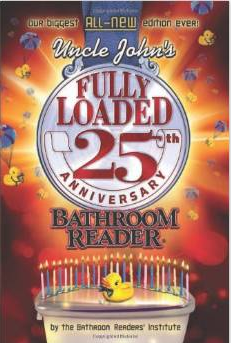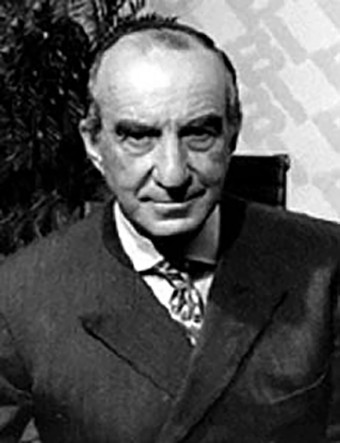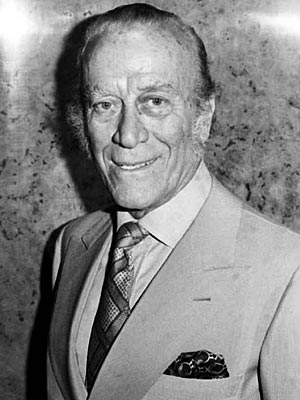Family Feud: The Guccis
One of the secrets of operating a successful family business is figuring out how to pass it along to your heirs without ending up in business-school textbooks as an example of how NOT to pass your business along to your heirs. It’s not as easy as it sounds.
Bag Man
In the late 1800s, a young Italian man named Guccio Gucci hopped a freighter for England after his parents’ straw-hat business in Florence went bankrupt. In London, Gucci found a job at the Savoy, then (and now) one of the most exclusive hotels in the city. Accounts vary as to what he did there- he may have been a waiter, a dishwasher, or a bellhop- but whatever it was, Gucci was struck by all the fancy luggage that wealthy people brought with them when they checked into the hotel. The elegant leather streamer trunks, suitcases, and handbags were more than just functional items, he realized. They also served as status symbols that communicated their owners’ social standing to the world.
Four years later, Gucci returned to Florence, where he found work in the leather goods industry, married, and started a family. He spent years learning the leather business and then, in 1921, opened his own store in one of the city’s fanciest shopping districts. He stocked it with a wide assortment of goods, both made in Italy and imported from abroad.
Intelligent Design
Gucci’s years observing the upper crust at the Savoy paid off: He developed a knack for sensing what wealthy tourists were likely to buy. When he couldn’t find what he wanted from his suppliers, he designed his own products and hired local craftspeople to make them. His shop developed a reputation fro excellent service and well-made, stylish goods sold at reasonable prices. As his business grew, Gucci began to stock only the goods designed and made by his firm- and the Gucci luxury brand was born.
Gucci ran the company that bore his name for more than 30 years. By the time he died in 1953, the business had grown into one of the most exclusive designer labels in Europe. Sophia Loren owned Gucci bags; so did Elizabeth Taylor, Katharine Hepburn, Princess Grace of Monaco, and Jacqueline Bouvier, soon to marry Senator John F. Kennedy.
Guccio had always resisted expanding outside of Italy, and it was only two weeks before he died that his son Aldo finally managed to open a store in New York City. He did it with a $6,000 bank loan- because his father refused to give him the money.
The reading of the old man’s will sparked the first Gucci family feud. That was when Grimalda fought her brothers Aldo, Vasco, and Rodolfo for a share of the company, but she lost.
Cracks in the Armor
Aldo became the head of Gucci; his brothers Rodolfo and Vasco worked in production and design. Unlike the old man, Aldo had no qualms about expanding. Why should Gucci wait for its foreign customers to come to Italy, he reasoned, when the company could go to them? In the years that followed, Aldo opened Gucci stores in London, Paris, Tokyo, Hong Kong, and other cities around the world. He also added new product lines, including designer shoes, ready-to-wear clothing, watches, perfume, and a line of lower-cost canvas-and-leather goods that brought hundreds of millions of dollars into the company.
It grated on Aldo that he owned just a third of the company, and his brothers Vasco and Rodolfo got two thirds of the profits he was most responsible for generating. The situation “improved” for Aldo when Vasco died childless in 1974. Aldo and Rodolfo bought out Vasco’s widow, split the shares, and became 50/50 owners. Rodolfo held on to his shares for the rest of his life, while Aldo gave each of his three sons 3.3 percent of the business, leaving him with a minority stake of 40 percent. But he still ran the company, and half of its profits went to his side of the family.
Generation Gap
Aldo and Rodolfo had their differences, but they managed to get along. It wasn’t until their children came into the picture in the 1970s that the problems at Gucci really started. The biggest troublemaker: Aldo’s son Paolo, one of the most creative members of the Gucci clan… and one of the most difficult to work with. Paolo clashed with both his father and his uncle: He wanted to start an entirely new designer label within the company, one with its own stores and targeted at a much younger demographic. Aldo and Rodolfo said no and relegated him to a frustratingly small role. It didn’t work. In 1980 Paolo secretly launched his own designer label without telling Aldo or Rodolfo. When they found out, they fired him and then sued to block him from using the Gucci name in business.
Paolo didn’t work at Gucci anymore, but he still owned a 3.3 percent stake in the company. That gave him the right to attend board meetings and to ask embarrassing questions about the way Aldo had manged Gucci’s finances over the years (and helped himself to millions in company funds). More than one board meeting ended in a physical fight. Paolo even filed documents in U.S. court that laid bare how Aldo had cheated the U.S. government out of $7 million in taxes.
Aldo eventually served a year in federal prison for tax evasion, but that wasn’t the only humiliation he suffered at the hands of his son. Though Aldo owned just a 40 percent stake in Gucci, he still ran the business, and as long as his brother Rodolfo was alive Aldo never had to worry about losing control of the company. That changed when Rodolfo died in 1983 at the age of 71, and his 50 percent stake passed to his only child and heir, Maurizio.
It’s My Pleasure
Like his cousin Paolo, Maurizio wanted to make changes at Gucci. The company made big profits in the early 1980s, but it did so at the expense of its exclusive image. Long gone were the days that Gucci was associated with Jackie Kennedy and Princess Grace. Now, thanks to the huge success of Gucci’s cheaper, mass-marketed line of leather-and-canvas bags, sold not just in Gucci’s boutiques but in almost any retail store willing to stock them, the brand became a tacky icon of conspicuous consumption. Gucci bags were now the kind of things that tourists, yuppies, and pimps bought at the mall, the airport, or even the drugstore.
Maurizio wanted to restore Gucci’s faded luster, but after 30 years at the helm, his uncle Aldo wouldn’t take advice from anyone, not even from the firm’s largest shareholder- especially not while Gucci was earning more than $50 million a year in profits, much of it from products that Maurizio wanted to get rid of.
Let’s Make a Deal
In the summer of 1984, Maurizio and Paolo came to an agreement: Paolo would vote his shares with Maurizio’s, enabling him to take control of Gucci. In return, Maurizio promised he would buy out his cousin’s 3.3 percent stake for $22 million, giving Paolo the money he needed to bankroll his own designer-goods company. The following September, the cousins put their plan into action, stripping Aldo of his power. They offered to let him stay on in a figurehead role, but when Aldo tried to fight back, he was thrown out of the company entirely.
Maurizio and Paolo’s deal fell apart just two months later, before Maurizio could get his hands on Paolo’s shares. Paolo turned Maurizio in to the Italian authorities for cheating on inheritance taxes, forcing Maurizio to flee to Switzerland to avoid arrest. Maurizio cleared up his tax problems without going to jail, but Aldo, Paolo, and Paolo’s brothers continued to fight him for control of the company.
Maurizio became convinced that the only way he was ever going to have a free hand at Gucci was to buy out his relatives. He didn’t have the money to do it himself, so he began looking for an outside investor. In 1987 he found one: Investcorp, a Bahraini investment bank, which agreed to buy the shares. Paolo sold out first, followed by his brothers, and then Aldo, who sold his shares in April 1989.
Dumb and Dumber
Maurizio was finally free to run Gucci as he saw fit, and Paolo now had the money he needed to get his own designer label off the ground. Neither cousin lasted very long. Paolo was the first to fail: Through a combination of high living and incompetent business decisions, he managed to burn through $40 million of his own money without ever opening for business. In 1993, he filed for bankruptcy, so broke that he couldn’t even pay his phone bill, let alone the more than $350,000 in back alimony and child support he owed his ex-wife. When he died from liver failure in 1995 at the age of 64, the Gucci company bought the rights to his name from the bankruptcy court.
Maurizio didn’t fare much better: His instincts about returning Gucci to its glory days were good, but he killed off many of the company’s most profitable product lines before there was anything new to replace them with. Its boutique stores empty and its coffers hemorrhaging cash, by the end of 1991 Gucci had a negative net worth of $17.3 million and was losing $30 million a year.
Downward Spiral
It’s possible that none of this would have threatened Maurizio’s hold on Gucci had he not also racked up $40 million in personal debts at the same time that he was running the company into the ground. Maurizio had used his Gucci shares as collateral for personal loans, and now that the company was losing money, he had no income… and no way to pay his debts. Investcorp was the only thing keeping the company afloat, but it had long since lost faith in Maurizio’s abilities. It refused to pump any more money into Gucci until he was gone.
Gucci was less than 48 days away from closing its doors and having its assets sold at auction when Maurizio, himself nearly bankrupt for nonpayment of personal debts, gave up the fight and sold his 50-percent stake to Investcorp. For the first time since 1921, there were no Guccis at Gucci, and there probably never will be again.
Out of the Ashes
It’s a testament to the strength of the Gucci brand that once Maurizio Gucci was replaced with competent management, it took the company just five years to repair its tarnished image and make record profits on more than $1 billion a year in sales. Maurizio was not so lucky: In 1995, the same year that Gucci went public, he was gunned down in Milan by a hit man hired by his ex-wife. She is serving a 29-year sentence for the murder.
 This article is reprinted with permission from Uncle John’s Fully Loaded 25th Anniversary Bathroom Reader. This behemoth of a book is overflowing with the incredible stories, surprising facts, weird news, little-known origins, fun wordplay, and everything else the millions of loyal fans have come to expect from the world’s best-selling bathroom reading series.
This article is reprinted with permission from Uncle John’s Fully Loaded 25th Anniversary Bathroom Reader. This behemoth of a book is overflowing with the incredible stories, surprising facts, weird news, little-known origins, fun wordplay, and everything else the millions of loyal fans have come to expect from the world’s best-selling bathroom reading series.
Since 1987, the Bathroom Readers’ Institute has led the movement to stand up for those who sit down and read in the bathroom (and everywhere else for that matter). With more than 15 million books in print, the Uncle John’s Bathroom Reader series is the longest-running, most popular series of its kind in the world.
If you like Today I Found Out, I guarantee you’ll love the Bathroom Reader Institute’s books, so check them out!
| Share the Knowledge! |
|








Astonishing…!
Paolo was such a fool he destroyed everything…
“no Guccis at Gucci” is better than “Guccis at Gucci” for the “GUCCI”! Lol…
Why come to this site at all? Why not just go to B and N and read the Bathroom Reader for free or pay $19.99 to read it at home?
Whatever happened to original content?
If they had only worked together and not let greed control them there would be Guccis at Gucci. The greed seemed to have been passed down from generation to generation. Aldo and Rudolfo should have seen that their sons were carbon copies of themselves.